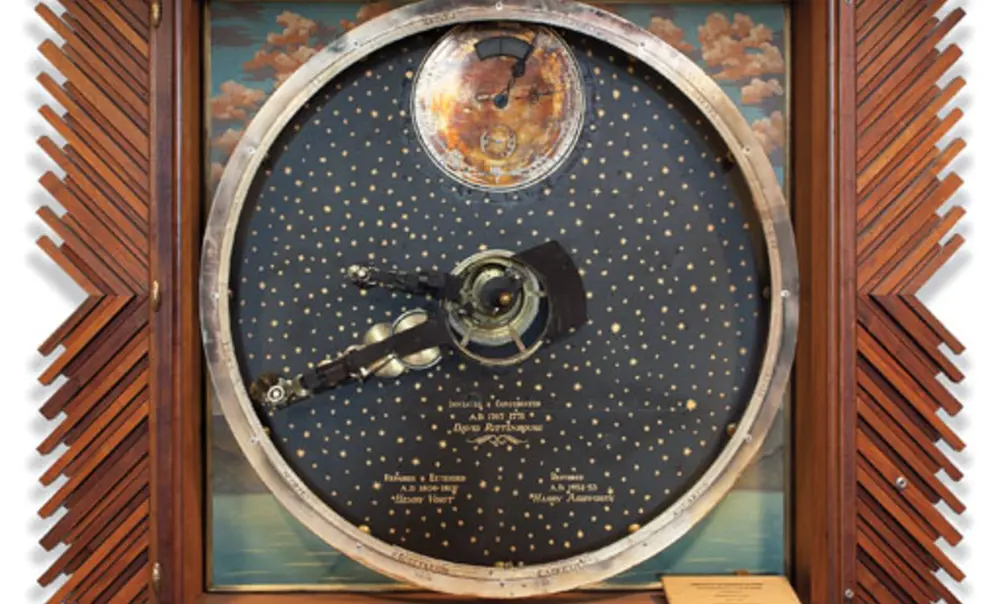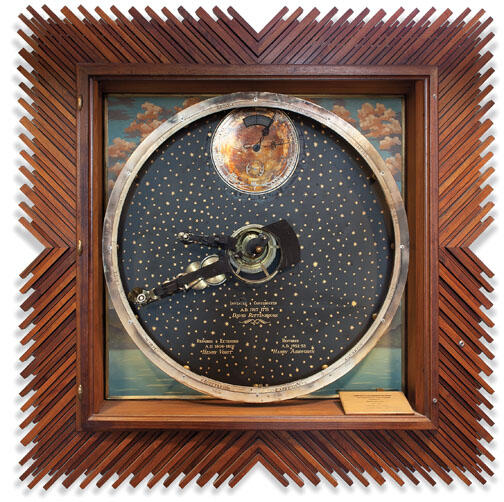From Princeton's attic: A 'mechanical time machine'
What: In 1771, Philadelphia clockmaker-astronomer David Rittenhouse built a mechanical model of the solar system to “astonish the skillful and curious examiner.” The provost of Penn was furious when Princeton sneakily acquired it — how could Rittenhouse “think so little of his noble invention, as to consent to let it go to a village”?
Lost after exhibition at the Chicago World’s Fair in 1893, the Rittenhouse Orrery was rediscovered in a campus basement half a century later, still in its shipping crate.In his 2001 book “Parallax,” Alan W. Hirshfeld ’73 calls the orrery — 44 inches in diameter — a “mechanical time machine” designed to show the arrangement of the solar system from 5,000 years ago to 5,000 years hence. He recalls standing in front of it as an undergraduate, “bleary-eyed from studying, just to gaze at the wondrous blue dial. It seemed almost too marvelous to believe — and still seems
so now — that the heavenly movements could be so accurately reproduced by a
200-year-old assemblage of gears, springs, and cams.”
Where: Near the main lobby in Peyton Hall.














No responses yet